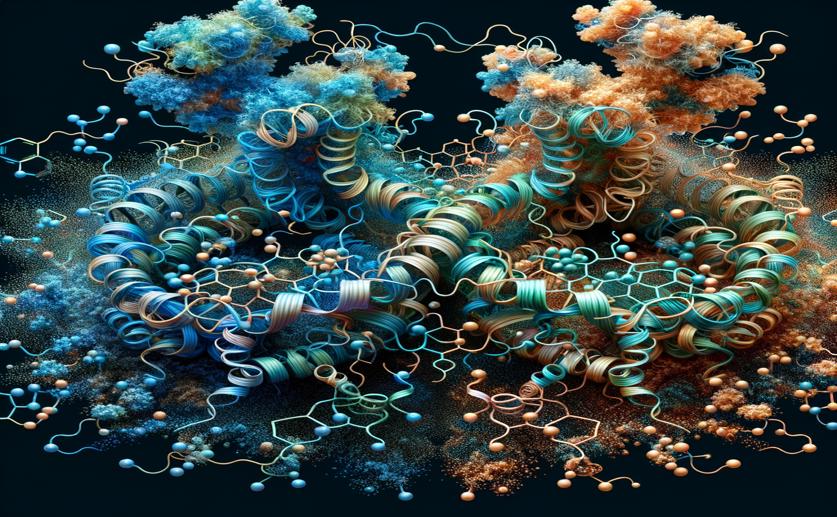
How Two Plant Proteins Control the Production of Medicinal Compounds
Greg Howard
14th May, 2024

Image Source: Natural Science News, 2024
Key Findings
- At Northwest A&F University, researchers found that a protein, SmMYC2, boosts medicinal compound production in red sage
- SmMYC2 partners with another protein, SmMYB36, to significantly increase these beneficial compounds
- The plant hormone jasmonic acid controls this process by removing repressors that inhibit SmMYC2's activity
References
Main Study
1) The SmMYC2-SmMYB36 complex is involved in methyl jasmonate-mediated tanshinones biosynthesis in Salvia miltiorrhiza.
Published 11th May, 2024
https://doi.org/10.1111/tpj.16793
Related Studies
2) Jasmonate passes muster: a receptor and targets for the defense hormone.
3) Plant oxylipins: COI1/JAZs/MYC2 as the core jasmonic acid-signalling module.
4) Transcription Factor SmWRKY1 Positively Promotes the Biosynthesis of Tanshinones in Salvia miltiorrhiza.
5) Tanshinone production could be increased by the expression of SmWRKY2 in Salvia miltiorrhiza hairy roots.



 23rd April, 2024 | Greg Howard
23rd April, 2024 | Greg Howard